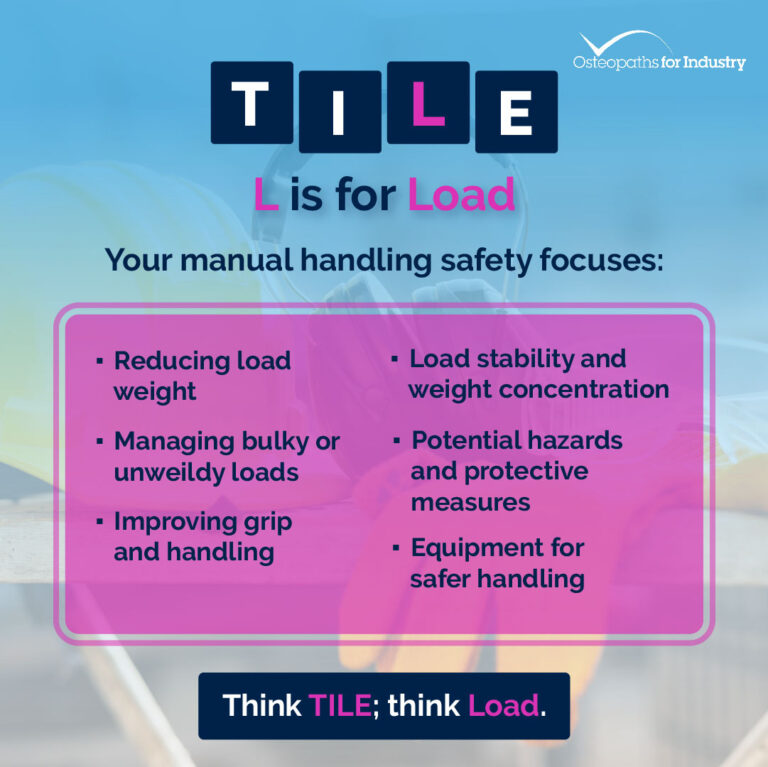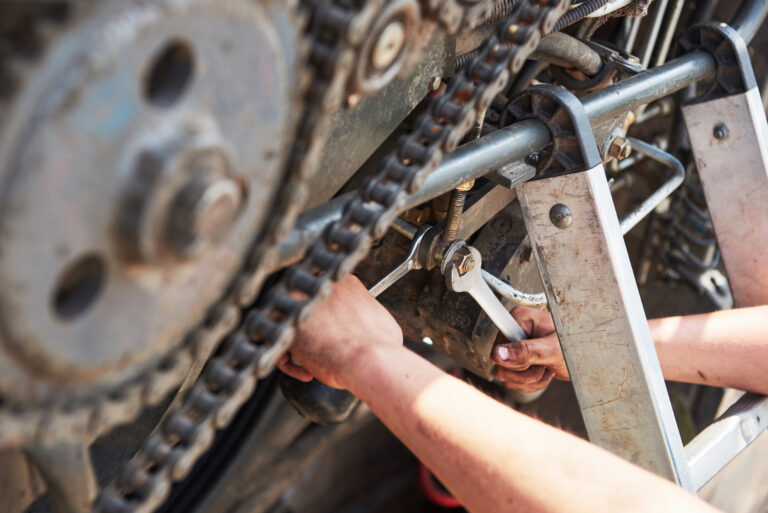Manual handling tasks are often carried out day in and day out across a huge variety of roles in many different types of industries. At Osteopaths For Industry, we’ve worked with the likes of B&Q, Coca-Cola, the BBC, and Buckingham Palace. However, just because manual handling is a necessary element of many workplaces, doesn’t mean tasks like lifting, carrying, pulling, and pushing don’t come without their risks.
When manual handling, it’s important to carefully evaluate the risks associated with various load characteristics. While the weight of a load is a critical factor to consider, understanding and addressing additional factors like the size, shape, stability, and potential hazards inherent to the load is equally vital for creating a safer manual handling environment.
Weight Dynamics
Factors like resistance to movement (friction), size, shape, and rigidity all play a key role in determining the risk of handling a certain load. However, weight is an undoubtedly central element when considering how to reduce injury risk level.
Reducing Load Weight

- When the risk assessment underscores the significance of load weight, exploring strategies to lighten the load becomes vital. For example, liquids or powders could be packaged in smaller or thinner containers. (If a liquid is flammable, consider additional measures to ensure safety.)
- Repackaging materials, specifying lower package weights, and considering alternative handling methods are all potential avenues you could explore to improve safety.
- However, a delicate balance is crucial, as reducing load weight shouldn’t compromise overall safety.
Bulky or Unwieldy Loads
The dimensions and shape of a load play a crucial role in determining how it can be effectively handled while keeping the risk level low. In the following situations, you should consider a load bulky or unwieldy, with the potential to cause injuries:
- When the load is intended to be lifted from, or close to, the ground but is too large to pass between the knees.
- When the bottom front corners of the load are beyond reach when carried at waist height, and maintaining a secure grip becomes a challenge as a result.
- When unfavourable postures are automatically adopted as a result of feeling the need to lean away from the load to keep it off the ground when carrying it.
- When the load lacks effective and comfortable handholds.

In a broader context, any load with more than 75 cm dimensions is likely to increase the risk of injury, especially if this size extends beyond a single dimension. In cases where loads of such dimensions are encountered, suitable handling aids must be used to reduce the chances of the handler suffering an injury.
A load characterised as bulky not only presents challenges in handling but can also impede a worker’s vision, a really important concern to take into consideration, particularly when carrying or pushing a load. Obstructed vision can easily result in tripping or falling. Team handling is a potential solution, as the obstruction of one person’s view by the load may be compensated for with a clear view from someone at the opposite end.
Improving Grip and the Handling of Loads
Loads are much harder to grip well if they’re large, round, smooth, wet, or slippery/greasy, and lacking in proper handles. This means that workers will have to exert more effort to lift, leading to exhaustion and overworking, which can increase the risk of injury. There is also, of course, a greater risk of dropping the load.
However, thoughtful and considered modifications and design considerations can be really effective in improving employees’ abilities to grip loads, particularly in situations where the load’s characteristics make it especially tricky. These types of modifications might include handles, hand grips, or the use of containers that the load can go inside to make carrying easier. You should also consider the use of mechanisms like trolleys to move loads that are difficult to lift.
Load Stability and Weight Concentration
Load stability and weight concentration play a pivotal role in injury prevention. Unstable or imbalanced loads introduce unpredictable stresses during handling, necessitating precautions. Ensuring secure containment of loose items and preventing unexpected shifts through proper packaging are all critical measures. If handling liquids or powders, containers should also be kept upright to avoid spills and ensure stability.
Potential Hazards and Protective Measures
Beyond the basics of size and weight, identifying potential hazards related to sharp edges, extreme temperatures, or the potential for damage is key. These factors may also make loads harder to grip or hold for extended periods. Protective measures should be carefully considered, including insulated containers and restraints for unpredictable animals.
Designing Equipment for Safe Handling
Regulations such as the Supply of Machinery (Safety) Regulations 2008 and the Provision and Use of Work Equipment Regulations 1998 outline obligations for designers and manufacturers. As outlined by these laws, employers must ensure that:
- Machinery and equipment are easily moveable
- Machinery has suitable hand grips
- Equipment is designed for lifting gear attachment
- Sufficient operating instructions and manual handling training have been provided to workers
- All workers are aware of any injury risks that they may face while handling loads

It is important for training to be practical, with actual handling practice being given to all employees. Personalised training can also help engage employees to ensure participation.
At OFI, we prioritise workplace safety. Explore our comprehensive manual handling courses and risk assessment services to cultivate a secure work environment for your team:
Make sure that you adhere to the Health and Safety at Work Act by using equipment and work processes to mitigate injury risk in a reasonably practicable manner.
Reasonably Practicable:
The term “reasonably practicable” refers to the principle of balancing the costs and efforts associated with prevention measures against the level of risk involved in a manual handling activity. The aim is to achieve the highest level of protection possible, considering factors such as the nature of the task, the potential for harm, and available resources for mitigating this risk. The most expensive option may not be “reasonably practicable,” so you are free to search for a cheaper alternative as long as it improves safety in the workplace
In Summary
A thorough and complete understanding of load characteristics is imperative to mitigate the risks associated with manual handling. Employers must adopt an approach which takes into consideration not just the weight of the load, but also factors like size, shape, stability, and potential hazards. Implementing measures to enhance grip, stabilise loads, and adhere to safety regulations ensures a safer manual handling environment where employees will feel supported and be less likely to experience both short and long-term injuries.








